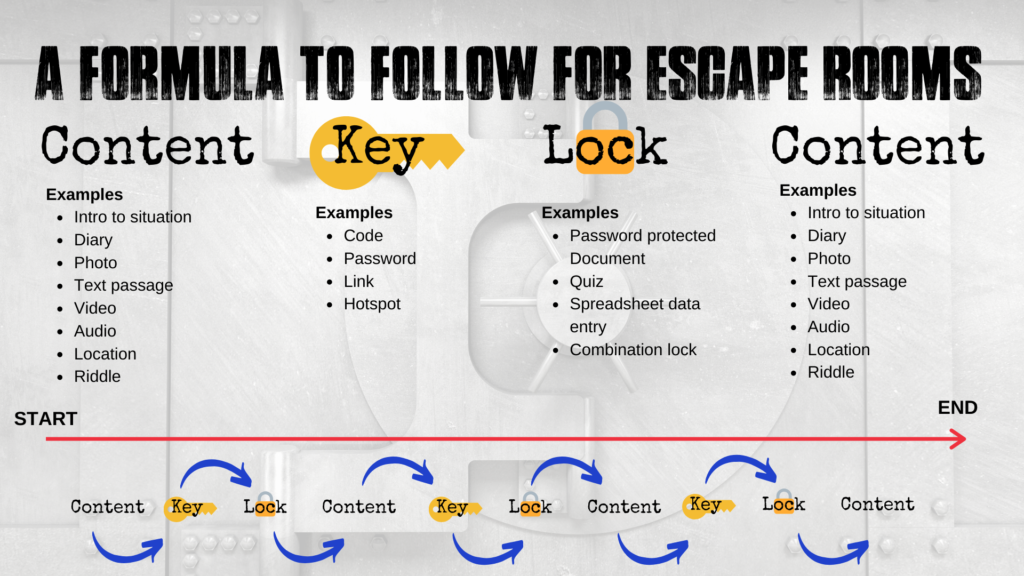
There are lots of online tools that could assist you with either transferring your physical escape room to online or by creating one from scratch with the online elements in focus. The tools listed below will help you create that formula for developing a successful escape room. If you begin with a piece of content that the students then have to find a key from to unlock a lock to get to the next piece of content you should be able to begin to easily figure out what you could achieve.
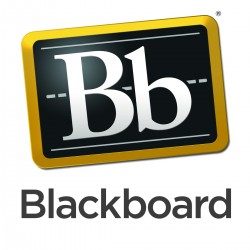 Blackboard Tools
Blackboard Tools
Blackboard has some powerful tools that can be used to support a virtual escape room, and would be ideal if you’re looking for fun ways to help your students engage with and familiarise themselves with specific tools within the VLE, in particular if you will be using online tests with students at some point in their course.
The tools we’ll be looking at are:
- Adaptive Release – a way of releasing individual items of content based on criteria met.
- Groups – students can be automatically or manually added into groups within Blackboard that gives them access to a space where they can work collaboratively to solve problems. This includes giving them access to their own Collaborative webinar space.
- Blackboard Tests and Quizzes – a system for students to input their answers from activities that can be pre marked, and then cause further content to be released.
With all escape rooms, we have to think about what will be unlocked and how will it be unlocked? So, for this scenario the lock will be the test (as students will submit the answers into here) and information worked out from the various activities will be the key – as these will be entered into the test and automatically marked.
So how does this all work together?
With adaptive release, instructors can create a set of rules to control how content is released to students in their courses. The rules may be related to availability, date and time, individual usernames, membership in course groups, review status of another item in the course, and Grade Center items such as scores, attempts, and calculated columns.
For example, you can load up all the content for your virtual escape room into Blackboard, but students must meet certain criteria to release the next stage of the puzzle. You may choose to have your students watch a video, then tick a box to say they’ve watched it. This then releases a set of questions that they must answer – perhaps by searching through your Blackboard module, or by watching the video again (these would be the hands on activities they have to solve in the face to face escape room).
Once they’ve gathered the answers, they can tick another box and a quiz/test is made available to them, they put the answers to the various puzzles into the test and this is automarked (see the quiz section below for more information) when they get all the answers correct another piece of content is released which could be another set of puzzles and another test, or a link to another place such as a Blackboard Collaborate room where you are waiting to greet the finishers, or a Padlet where they post their team name and time.
You can release different content/puzzles to different groups of students (see more about setting up groups below), but ultimately lead them all to the same final location or submission point (e.g. Padlet).
You can also release content at specific times, to the escape room could become live at a specific time so you know no one can access it early.
For more information about the different criteria and how to set them up see our guide on the digital handbook.
You may choose to set your escape room up for students to complete individually, but you may want to use it as an ice breaker or team building activity, in which case you’ll want to use the Blackboard Group tool, where you can randomly assign students to groups, let them sign up to specific groups or you can manually add them (this might work well if you already know your students and want to mix the abilities/friendship groups).
Using groups for the escape room means you can give the students a specific space to work collaboratively and you can give them access to their own Blackboard Collaborate meeting space where they can see each other to work through the activities.
Using groups also means you can use adaptive release to release content to just that group, so you can have different puzzles or activities for each group.
The Blackboard assignment tool also has a group submission option, which means that one student from the group could upload something at the end of the escape room, on behalf of all the students. You would only need to mark it once and all students would receive feedback.
These features would be useful if students will be doing group projects in the future and you want to introduce these different elements they’ll be using.
Quizzes and/or tests are a great way for students to submit their answers from the various puzzles and get feedback or unlock another piece of content. You must choose your questions carefully to ensure they can be auto marked, so that the feedback and next step of the escape room are unlocked instantly.
You could use the feedback feature of the quiz to provide feedback after every answer they’ve submitted correctly and this leads to another puzzle, e.g. letters to spell out a word, or words to rearrange into another clue.
You could also just have feedback once they’ve scored 100% that has a link to another place they need to go, e.g. another Blackboard Collaborate room, a Teams meeting/site or a Padlet.
There are a range of question types that would be interesting to explore for the escape room including:
HotSpot – students are presented with an image and select a particular area as the answer.
Multiple Choice questions – with Multiple Choice questions, students select one correct answer from several choices.
Multiple Answer Questions – Multiple Answer questions allow students to choose more than one answer. Use this type of question when more than one answer is correct.
Fill in the blank questions – A Fill in the Blank question consists of a phrase, sentence, or paragraph with a blank space where a student provides the missing word or words. The maximum number of answers you can provide for a blank is 100. Use Fill in Multiple Blanks questions to create a question with multiple answers.
Other questions types are available and can be explored in more detail here.
For further information of how to set up tests see our digital practice handbook

Word
Microsoft Word documents can be used really well within an online escape room with the possibility of being able to lock a document.
To lock a document within Word is described below:
- Click the ‘File’ tab.
- Click ‘Info’.
- Click ‘Protect Document’ and then click ‘Encrypt with Password’.
- In the Encrypt Document box, type a password, and then click ‘OK’.
- In the ‘Confirm Password’ box, type the password again, and then click ‘OK’.
- Open the document that you want to add a password to.
- On the ‘Word’ menu, click on ‘Preferences’.
- Under ‘Personal Settings’, click ‘Security’.
- In the ‘Password’ dialog box, type the password again and then click ‘OK’.
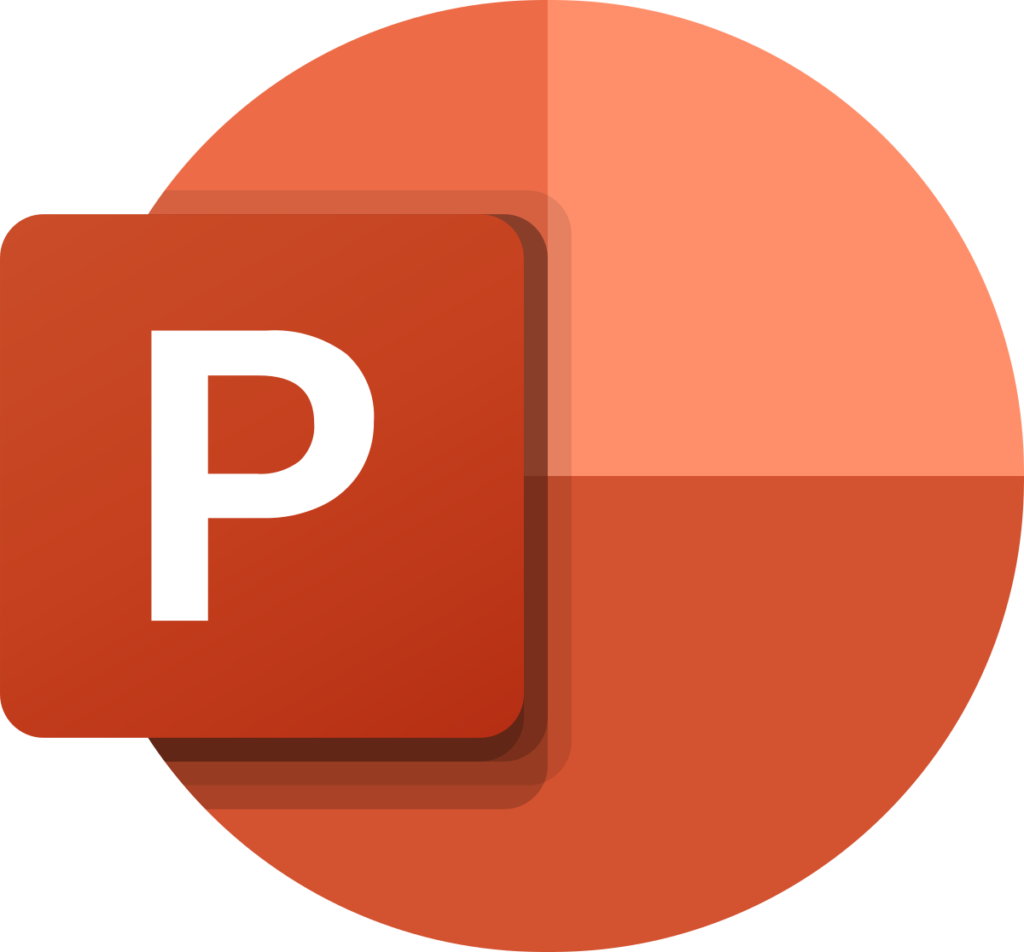
PowerPoint
Like other spreadsheets and documents you can also set a password to get into a PowerPoint, thus creating a lock for students to open, just hide the password (key) somewhere else for them to find. You can also create a key within the PowerPoint document by hiding a clue somewhere within the content.
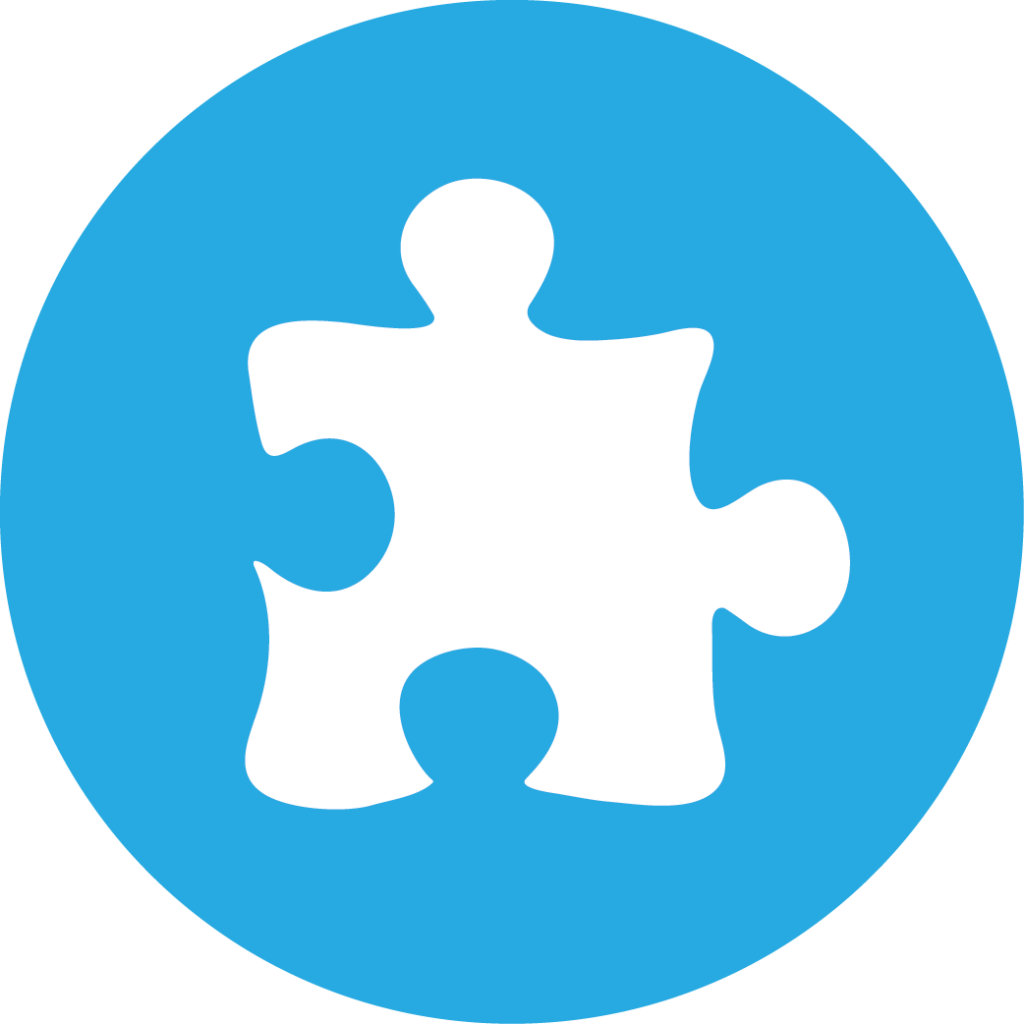
Jigsaw element
Create a jigsaw to reveal one of your keys. This simple jigsaw maker allows you to upload an image and make it into a jigsaw which students would need to unscramble to find the clue (or key) to get into the next item in the escape room. Pop the link to the jigsaw into one of your previous items.
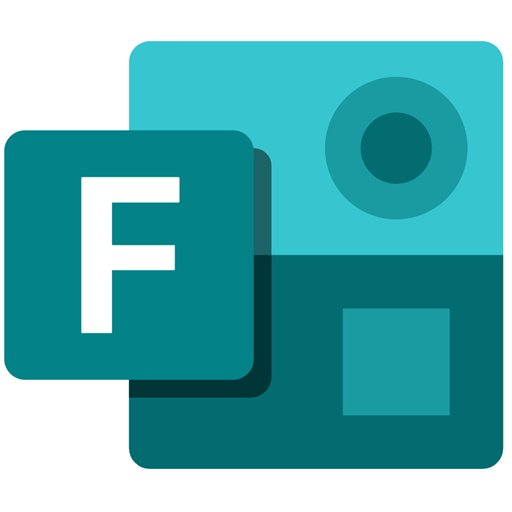
Forms
Microsoft Forms is a great tool for putting together elements of your escape room. It can provide a place for answers (or ‘keys’) to be inputted which then takes users onto the next piece of content.
Essentially, Microsoft Forms lets you create surveys or questionnaires. This makes it ideal for creating an online form in which users could input an answer to one of the escape room puzzles they have solved. If they input the correct answer, they move on, if not, they can try again.
A form could be used as a ‘guide’ to an escape room, taking users through the whole experience. Users unlock each form by solving the puzzle, until they get to the end.
Question 1 asks the user to solve a puzzle and input the answer.
If a user gets it correct, they go to question 2, they get it wrong they can keep trying question 1.
Question 2 gives a link to information that users need to assimilate to create a code, they can also input the code on question 2. If a user gets it correct, they go to question 3, if they get it wrong they can keep trying question 2.
and so on until the end of the escape room.
You can also create branching questions, so when users input different answers they are taken on different paths.
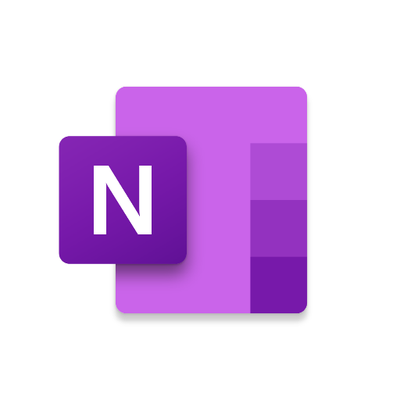
OneNote
You can create a great online escape room by using Microsoft OneNote.
Microsoft OneNote is a great collaborative tool, ideal as the foundation for a virtual interactive Escape Room. With its password-protected function and its ability to deal with many file types, OneNote is a perfect gatekeeper to keep your puzzles and quizzes safe.
Using OneNote’s sections and pages can help you organise and plan your Escape room. Also having the ability to record audio and video directly into OneNote, you can add an extra level of depth to the problem solving, which will keep your students entertained for hours.
A great guide for creating an Escape Room in OneNote by Dr. Emma Thrikell, Senior Lecturer in Human Resource Management Programme Leader MSc Human Resource Management/Development University of Central Lancashire can be downloaded here.
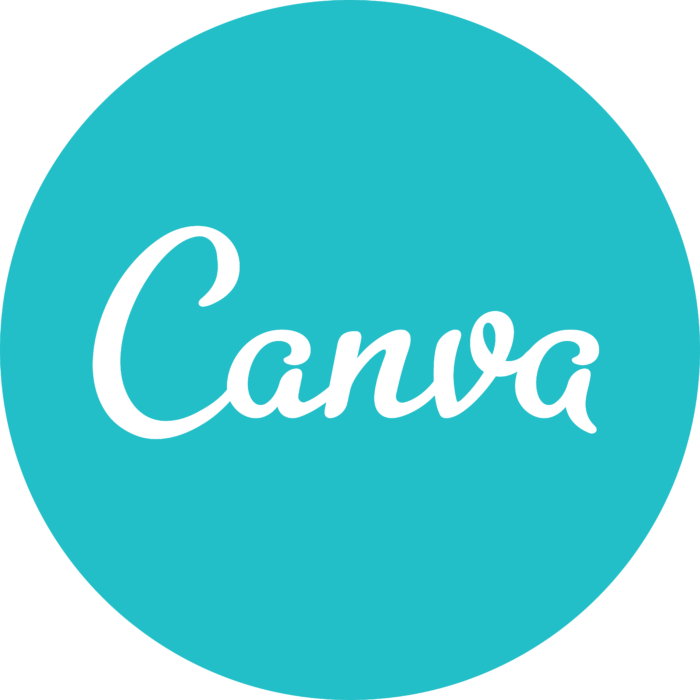
Canva interactive
Canva is an online software where you can create various different interactive designs and graphics. By basically adding hyperlink elements to an infographic, it could be a great way to add additional sources for students to look at and find the ‘key’ or ‘lock’ for part of your online Escape Room.
QR codes can also be added to these interactive designs to again direct students other ‘keys’ and ‘locks’ within your Escape Room, as well as providing further information.

ThingLink
Thinglink is a free website that allows you to create a webpage with an image with hotspots. Hovering on the hotspots will bring up more content, videos, images, text and link to other web pages.
You can use Thinglink as the glue to glue all your different activities together. If you have the main image as the “room” you are trying to escape from you could have the hotspots bring up the clues and activities to escape from the room.
Here Is a basic demo room.
To setup a Thinglink page, you will have to create an account with Thinglink. There is also support and videos to assist you with your creations.

There are other areas online that might be useful for further reading and ideas of creating an online Escape Room.
- Find out 30+ Digital Escape Rooms and how to create your own.
- How to add an Escape Room to your online classroom.
- Creating a Digital Escape Room within your classroom.
